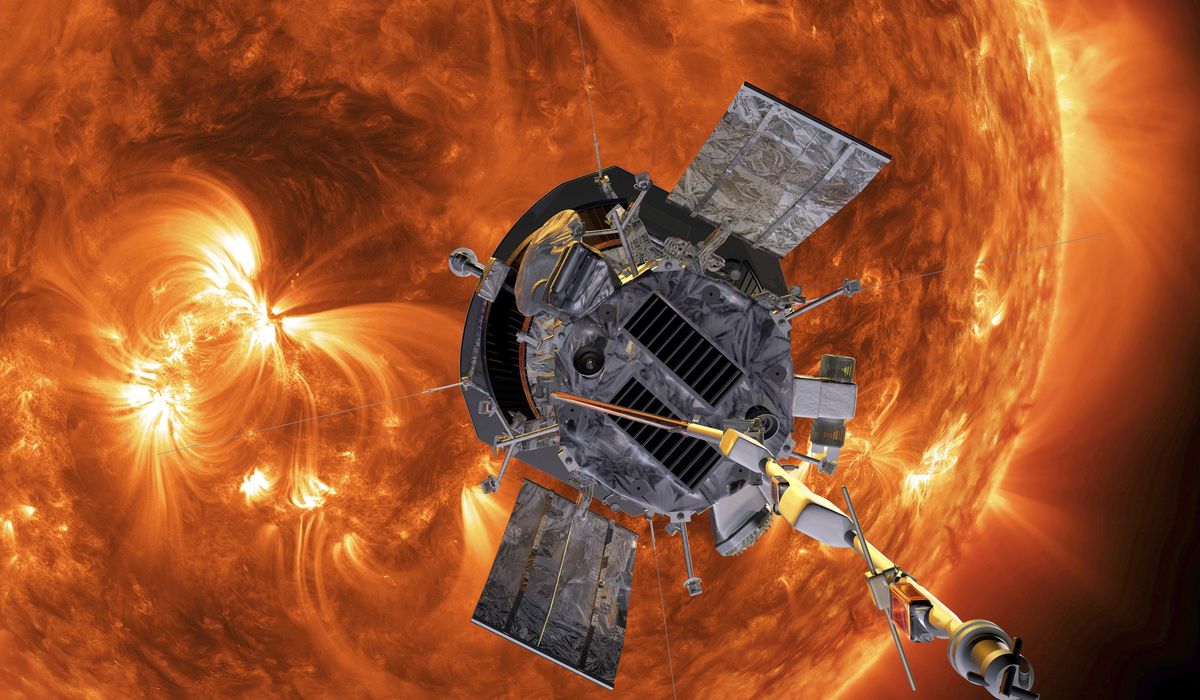


In the midst of an especially active year for our closest star, the sun stands front and center in cosmic theatrics with intense eruptions and spectacular celestial events.
Amid these fiery displays, a daring NASA mission takes a gamble, aiming to graze the sun’s surface and uncover its secrets.
Launched in 2018, the Parker Solar Probe is pushing boundaries like no spacecraft before it. On Christmas Eve, it’s scheduled to make its boldest move yet — swooping within 3.8 million miles of the sun’s scorching surface and traveling in excess of 430,000 miles per hour. To put it simply, no craft has approached this close at such incredible speeds.
“It is a voyage into the unknown,” said NASA’s lead science official, Nicola “Nicky” Fox, who champions the initiative as “the coolest, hottest mission under the sun,” The Washington Post reported.
The endeavor comes with a hefty $1.4 billion price tag — a clear indicator of the sun’s significance, despite some aspects remaining an enigma.
“We live in the atmosphere of the sun. Anything that happens on the sun, we feel the effect here on Earth,” Ms. Fox said. “If the sun sneezes, the Earth catches a cold.”
The coming total eclipse on April 8 will give millions of Americans a rare chance to actually see the sun’s corona when the moon fully blocks the main disk. And if you miss it, you’ll have to wait 20 years — the next total solar eclipse for the U.S. won’t be until Aug. 23, 2044.
The eclipse will offer solar scientists a chance to check out a few things.
“Scientists have been trying to solve the coronal heating problem for decades. Data from the Parker probe, in tandem with observations during eclipses by heliophysicists on Earth, could put this one mystery of sunshine to rest,” the Post reported.
But there’s more at stake than just understanding our luminous neighbor. The mission also serves to further American aerospace excellence. With nations competitively exploring our solar system, the advances from Parker could enrich future space ventures.
“We will be almost landing on the star,” Nour Raouafi, project scientist for the mission and a Johns Hopkins University physicist, told the Post. “This is a high-risk mission. When you go into the atmosphere of a star, it is really harsh.”
• Staff can be reached at 202-636-3000.
